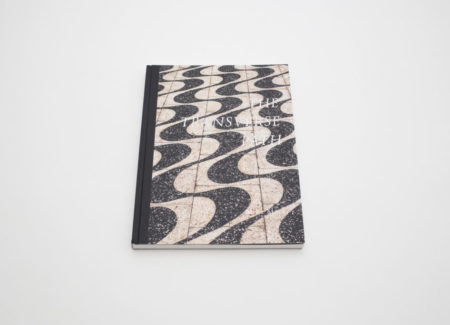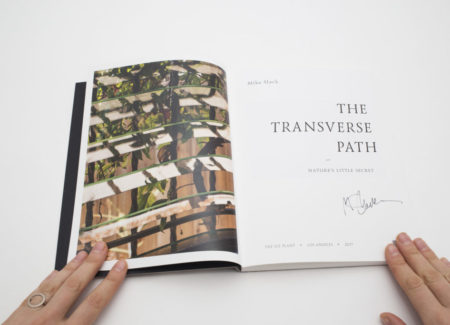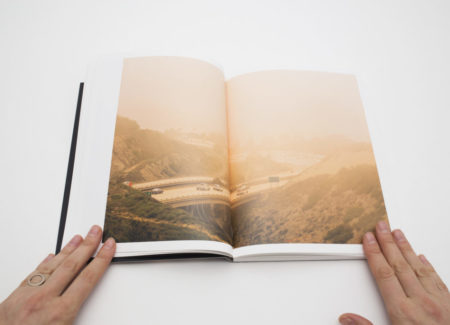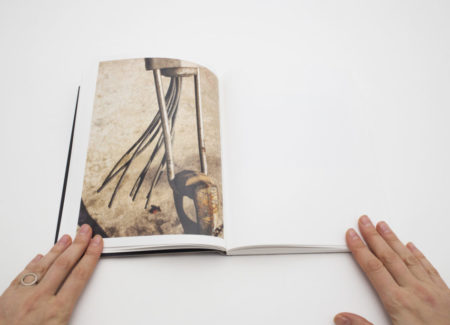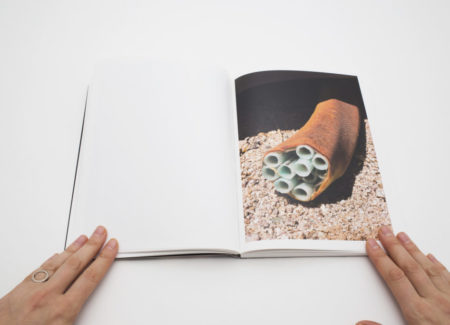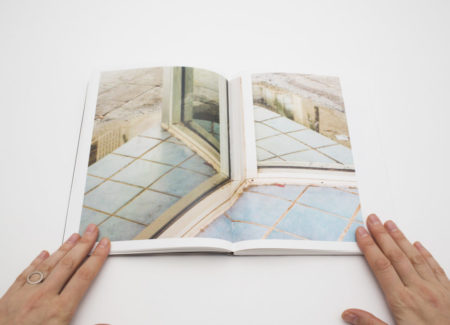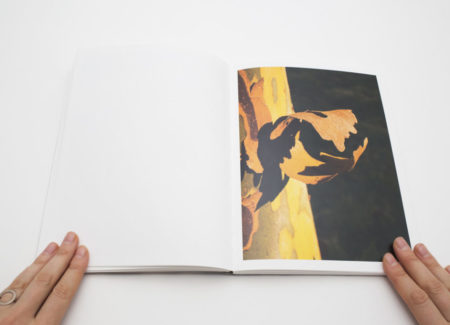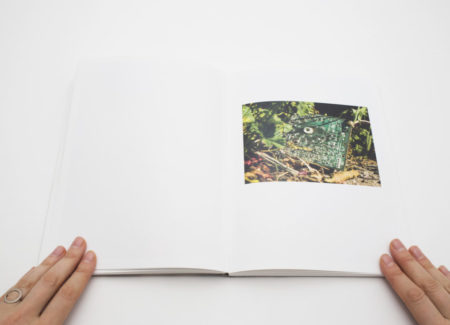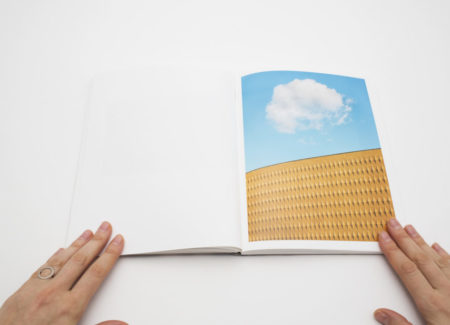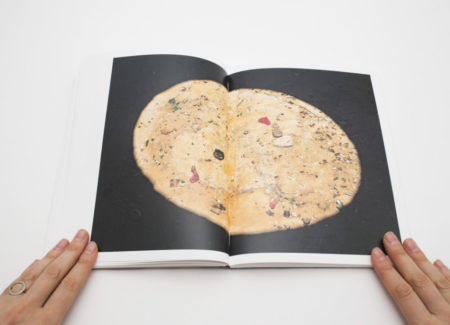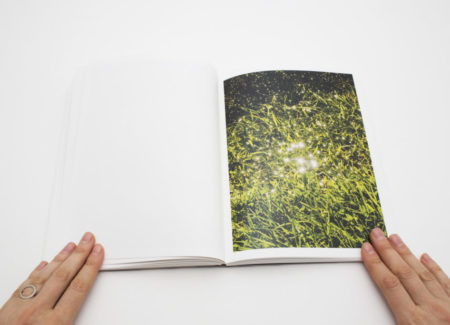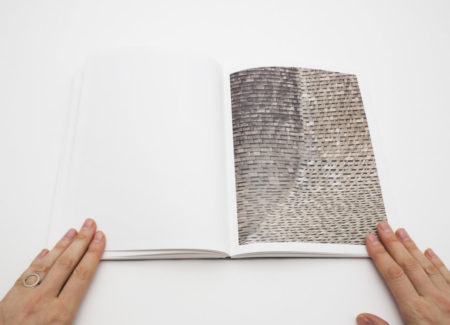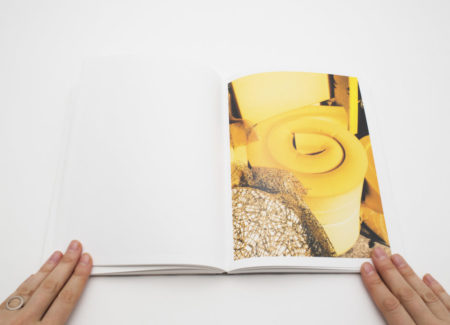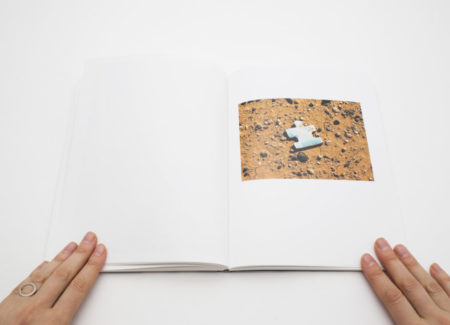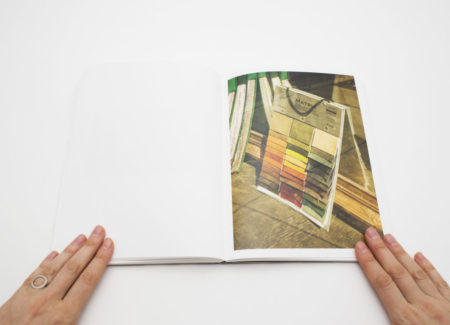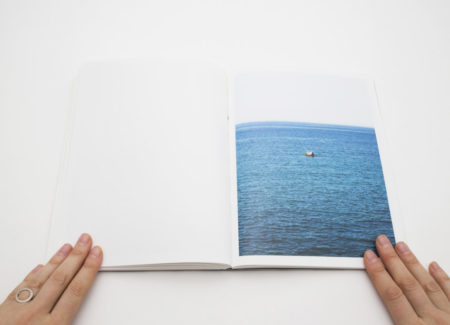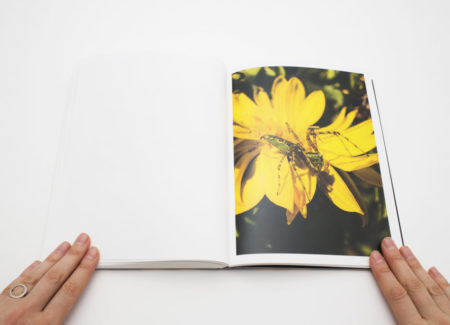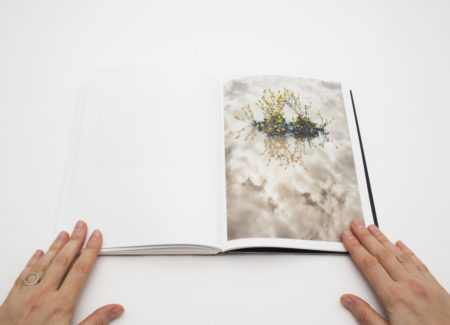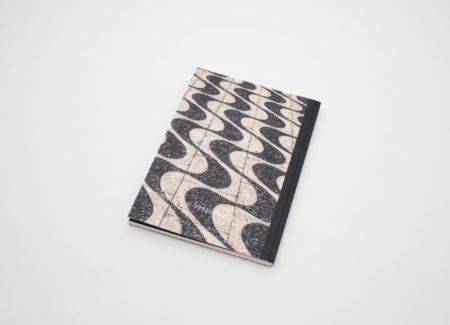JTF (just the facts): Published by The Ice Plant in 2017 (here). Hardcover, 100 pages, with 50 color photographs. In an edition of 900 copies. (Cover and spread shots below.)
The Transverse Path is also available in a special edition (here). This version (in an edition of 40 copies) comes with a signed book, packaged in a hand-stamped, numbered slipcase, and includes one of two archival pigment prints (18.5 cm x 25.3 cm).
Comments/Context: Mike Slack picked up photography in his late twenties, shooting Polaroids. Having no formal training as a photographer, Slack relied on his intuition and sensibility to guide his efforts. He published his first photobook OK OK OK, a collection of Polaroids taken across the United States, with Jason Fulford’s J&L Books in 2002. When the book sold out, he co-founded (together with Tricia Gabriel) a new publishing imprint, The Ice Plant. They reprinted OK OK OK and produced two more books of Slack’s Polaroids, Scorpio and Pyramids (now seen as a single project). In addition to publishing his own work, Slack has also collaborated with artists like Fulford, Ron Jude, Tamara Shopsin, Ed Panar, and others.
The Transverse Path (or Nature’s Little Secret) is Slack’s most recent photobook. Unlike his previous projects, which were based on finding the intuitive connections between images he had already made, in this case, Slack began with the idea of the book first, working towards it as he was taking photographs and editing the work. As a result, it feels even more intentional and controlled than his earlier books.
The Transverse Path starts with an exciting cover. It depicts a wavy black and white mosaic resembling the one from Copacabana beach in Rio de Janeiro (although shot in Lima, Peru); the title and artist’s name appear over this motif in embossed silver, creating almost a hallucinogenic combination of wavy patterns and reflective letters. Inside, the pages are hosted between two boards, and the images vary in size and placement, setting up the dynamic visual flow.
The photographs in the book were made between 2011 and 2017, mostly around the western United States but also in Peru and France, yet they’ve been sequenced in such a way that these realities have become seamlessly interwoven. The varied images range from shots of a cloud, a rubber band, and an electronic chip, to curious found geometric shapes and patterns. There is no obvious linear story, nor does the visual narrative have a conventional beginning and end, and this open-ended structure allows for more potential interpretations and readings.
The Transverse Path offers a dreamy and marvelously attentive look at the world around us, finding overlooked connections and parallels in extremely familiar yet still unexpected places. Slack often combines nature with the footprints and residues of human activity, offering peculiar links and associations, hinting at some invisible order. It is not always immediately obvious what is happening in his pictures, and yet perhaps it is this mystery that makes the photobook exciting.
One of the photographs captures the remains of take out food and torn plates on a dark surface, the mess covered with tiny yellow flowers. Slack flattens the image, making the elements look like they are floating in a galactic blackness. Another image is a close up of a perplexing metal structure, perhaps an industrial tension cable with a few wires floating like the undulating arms of a squid. It resonates with a later image of a cut pipe filled with plastic tubes, and even with a shot that looks like bending tree bark under sunlight. The book is filled with these possible relationships, as if we could puzzle out the connections if we only were able to alter our mindset a few clicks.
Slack also playfully uses natural light. A full spread image captures a golden circle on the ground surrounded by a dark shadow, highlighting an all-over composition of colorful pieces of broken glass, tiny stones and the gritty texture of the surface; but again we wonder, where did this circle come from and why is it here? In another photograph, green grass is spangled with flowers, perhaps dandelions, as some of them shine like diamonds under the summer sunlight. Is there some magic taking place, or is it just a momentary flash?
Contrasts of color offer another opportunity for echoes and refrains. A puffy cloud floats in blue sky above a yellow brick wall with a geometric pattern. This image then resonates with a picture of a blue jigsaw puzzle piece on a dry desert surface, and again with an image of a rock surfacing in the ocean as the sky above looks white. And around the carousel of imagery we go.
Slack often compares the experience of reading images to reading text, where the connection between the images becomes key, asking viewers for a more committed engagement. Perhaps this explains why his books don’t offer traditional captions and texts, and usually only include a quote that can suggest a certain direction. A quote from the philosopher Vilém Flusser appears at the end of The Transverse Path: “Reality is a web of concrete relations. The entities of the environment are merely knots in this web, and we ourselves are knots of the same sort”.
The oblique, and sometimes crosswise, narrative that unfolds through the complex web of visual relations in The Transverse Path invites the viewer to pay close attention. And while Slack sets up the conditions for certain insights and connections, the book only becomes complete as we each discover our own interpretations of his carefully edited patterns, colors, and allusions.
Collector’s POV: Mike Slack does not appear to have gallery representation at this time. As such, interested collectors should likely follow up directly with the artist via his website (linked in the sidebar).
